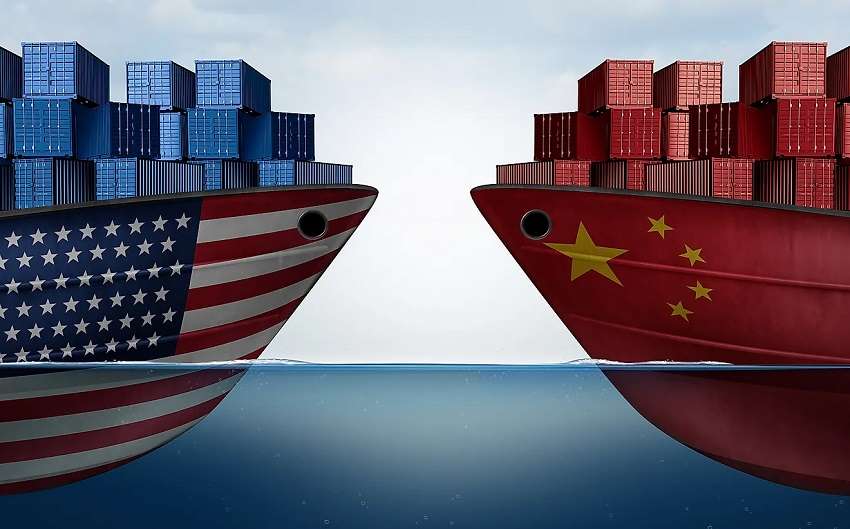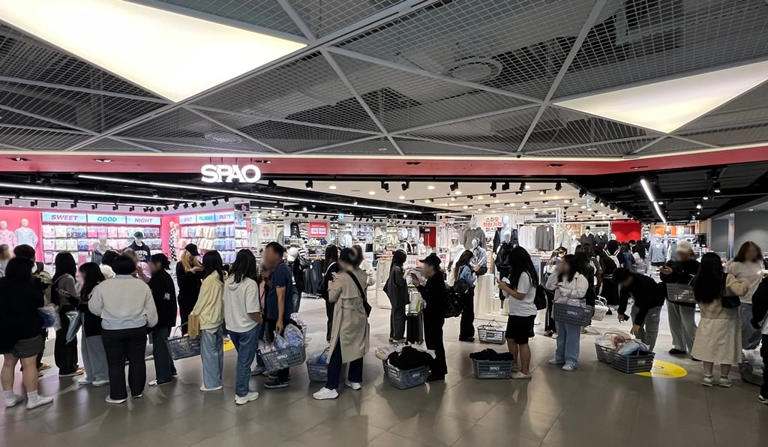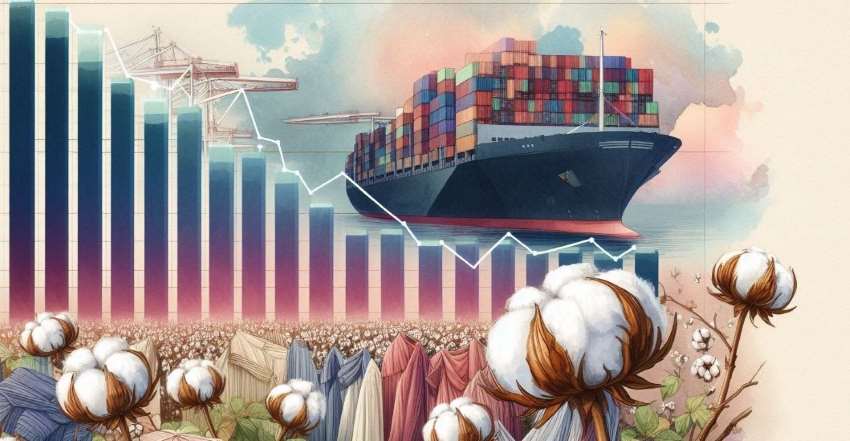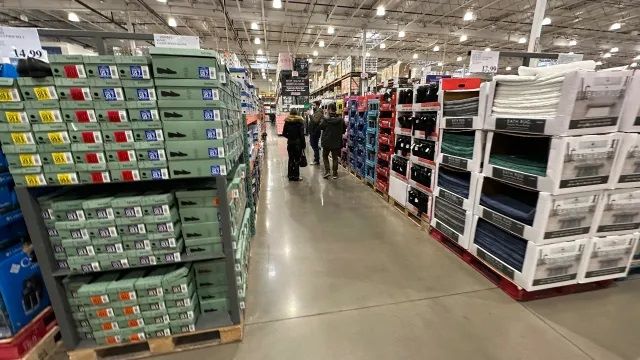FW

Bangladesh, renowned for its robust garment manufacturing sector, is undergoing a profound transformation towards sustainability. This evolution is underscored by the rapid proliferation of LEED (Leadership in Energy and Environmental Design) certified factories, marking a significant shift beyond sheer production volumes to environmentally responsible practices that resonate globally.
A global leader in green manufacturing
Bangladesh stands tall with the highest number of LEED-certified garment factories worldwide, a testament to its commitment to sustainable industrial growth. As of March 19, the country had 240 LEED-certified factories, including 98 Platinum and 128 Gold certifications. This leadership is further solidified by the presence of 66 factories among the world's top 100 LEED-certified garment facilities, according to the Bangladesh Garment Manufacturers and Exporters Association (BGMEA).
LEED certifications, categorized into Platinum, Gold, Silver, and Certified levels by the U.S. Green Building Council (USGBC), reflect varying degrees of sustainability achievements. Platinum denotes exemplary performance across all categories, followed by Gold, Silver, and Certified levels.
Bangladesh's success is highlighted by the significant number of Platinum and Gold certified garment factories. Specifically, the recent addition of Echotex Limited, Elite Garments Industries, and Euro Knit Spinn, all located in the Gazipur region, has increased the number of Platinum certified factories to 98 and the total number of LEED certified factories to 240. While precise global rankings fluctuate, Bangladesh consistently holds a dominant position in the number of LEED certified garment factories, particularly at the platinum and gold levels.
What makes a factory LEED certified?
Achieving LEED certification necessitates a holistic approach encompassing sustainable site selection, water and energy efficiency, superior indoor environmental quality, and innovation beyond standard practices. These criteria ensure reduced environmental impact and enhanced operational efficiency, reinforcing Bangladesh's stature in global sustainable manufacturing.
Impact of LEED certified factories
Beyond environmental benefits like reduced energy consumption and improved air quality, LEED certification yields substantial economic and social advantages. Lower operational costs, enhanced brand reputation, and improved worker conditions underscore the transformative impact of sustainable practices on Bangladesh's garment industry.
Export benefits of LEED certification
LEED certification has significantly boosted Bangladesh's export competitiveness by aligning with global sustainability trends. The preference for sustainable sourcing among international brands has positioned LEED-certified factories as preferred partners, attracting premium buyers and expanding market access.
For instance, Remi Holdings achieved LEED Platinum through initiatives such as rainwater harvesting and solar energy adoption, resulting in notable cost savings and increased international orders. Such successes illustrate the tangible benefits of sustainability in both economic and environmental terms.
According to the Bangladesh Garment Manufacturers and Exporters Association (BGMEA), the number of LEED certified garment factories in Bangladesh has increased dramatically in recent years. This growth is directly linked to the increasing demand for sustainable products from international buyers. A BGMEA 2023 report stated that "The increase of LEED certified factories has lead to a increase of 15 per cent in orders from European and North American buyers over a 3 year period."
Similarly, a study by the International Finance Corporation (IFC) showed factories that implement energy-efficient technologies can reduce their energy consumption by up to 30 per cent, leading to significant cost savings.
Future outlook
While Bangladesh leads in LEED certifications, challenges persist, including financing barriers and the need for broader sustainability awareness among smaller enterprises. However, ongoing innovation and investment in sustainable technologies promise a bright future, reinforcing Bangladesh's role as a global hub for green garment manufacturing.
Therefore, Bangladesh's journey towards sustainability through LEED certification not only enhances its global competitiveness but also sets a benchmark for ethical and environmentally conscious industrial practices. By continuing to embrace and innovate in sustainable manufacturing, Bangladesh not only secures its economic future but also contributes significantly to a greener global apparel industry.
To explore the potential of milkweed (Asclepias) as a sustainable natural fiber, Ghaziabad-based Northern India Textile Research Association (NITRA) has signed an MoU with the CSIR– National Botanical Research Institute in Lucknow. The collaboration aligns with India’s focus on innovation-driven sustainability in the textile industry.
The partnership between NITRA and NBRI partnership seeks to not only enhance fiber yield and create sustainable sourcing methods but also identify commercially viable applications for the fiber. The institutions believe, the initiative could lead to the development of an alternative raw material base for the Indian textile industry.
The collaboration is also positioned as a step towards Aatmanirbhar Bharat by supporting domestic innovation and reducing dependency on imported synthetic fibres. The project is expected to contribute to long-term environmental and economic resilience in textile manufacturing.
Re-affirming the government’s support for initiatives promoting indigenuous and eco-friendly resources, Giriraj Singh, Union Minister of Textiles, said, the study aims to conduct a genomic analysis of the plant to better understand its structure and enable its use as a viable alternative to synthetic fibers.
Known for being lightweight, insulating and biodegradable, Milkweed fibers are suitable for applications in home furnishings, technical textiles, and clothing insulation. However, they have been rarely used in large-scale manufacturing so far, says the study.
Though Indian leather and textile exporters don’t expect a huge rise in new orders, they see the 90-day tariff reprieve as an opportunity to clear their existing backlogs at reduced tax rates.
Industry sources suggest, weak demand and uncertainty surrounding Washington's ongoing trade talks with other countries are keeping US consumers in a ‘wait-and-see’ mode.
Prabhu Dhamodharan, Head, Indian Texpreneurs Federation (ITF), states, the recent developments could ease current difficulties in dispatching orders. However, the average total tax on consumer goods, including textiles, entering the US is over 20 per cent, indicating continued pressure on spending, he pointed out. This includes a base duty of 10 per cent on all countries and tariffs exceeding 100 per cent on imports from China.
While US President Donald Trump recently postponed the implementation of reciprocal tariffs for 90 days, with the exception of China (which currently faces a 104 per cent tax), the standard 10 per cent duty that took effect on April 5 remains universally applied.
According to A Sakthivel, Vice Chairman of the Apparel Export Promotion Council, the Council can only export based on demand and its existing capacity. Head of the Poppys Knitwear in Tiruppur, Sakthivel says, exporters are focusing on shipping only pending orders during the relief period and that the tariff window might help speed up shipments by about ten days.
He adds, Indian exporters are closely monitoring the conclusion of the US-India bilateral trade agreement (BTA) negotiations, which could benefit the sector in the long run. US buyers now believe that India will receive preferential tariff treatment compared to other Asian nations, particularly China, he states.
The United States imported $107.72 billion worth of textiles in 2024, with $80 billion of that being clothing alone. China held the largest share at 21 per cent, followed by Bangladesh (9 per cent), India (6 per cent), Vietnam (19 per cent), and Sri Lanka (3 per cent). Under the new tariff structure, India’s main competitors, Bangladesh (37 per cent tariff), Sri Lanka (44 per cent tariff), and Vietnam (46 per cent tariff), will all pay significantly higher duties. The United States is currently in negotiations with over 75 countries to reduce their tariffs.
Concerned about order cancellations under the new structure, the leather sector has welcomed the tariff delay, according to Israr Ahmed, Farida Group, a Chennai-based exporter of leather goods. He states, most exporters are currently trying to push through orders within the 90-day window, which aligns with the industry’s order cycle of 90 to 120 days. Even though India’s global leather and footwear sales are relatively small, consumers are starting to realize the need to diversify their purchases away from countries like China and Vietnam, he opines.
According to government data, India exported $4.1 billion worth of leather and leather products between April 2024 and February 2025, with $870 million of that going to the US. Ahmed, Former Vice-President, Federation of Indian Export Organisations (FIEO), believes India will eventually increase its market share—as long as high tariffs on rival nations persist.
A report by the Institute of Cost and Management Accountants of Pakistan (ICMA) cautions, the 29 per cent tariffs imposed by the United States on Pakistan’s exports could create significant short-term hurdles for the nation’s textile industry that constitutes over 70 per cent of its shipments to the US.
The new tariff could lead to a decline in export volumes as US buyers potentially shift their orders to countries facing lower tariffs, according to ICMA’s analysis. This shift could result in job losses and possible factory shutdowns, particularly affecting small and medium-sized exporters. However, the 90-day freeze on the tariff's implementation offers a crucial window for Pakistan to engage in negotiations with the US.
The ICMA report points out a relative advantage for Pakistan despite these challenges. While Pakistan faces a 29 per cent tariff, several regional competitors are subject to even higher rates. For instance, China faces a substantial 125 per cent tariff, while Bangladesh, Vietnam, Cambodia, and Sri Lanka have tariffs ranging from 37 to 49 per cent. Nevertheless, India and Turkey benefit from lower tariffs of 26 per cent and 10 per cent, respectively, placing Pakistani exports at a disadvantage in the US market.
To mitigate these negative impacts, the ICMA recommends immediate diplomatic engagement with the US to seek tariff relief and improved trade terms. The Pakistani Government should support the textile sector by lowering duties on essential materials and offering tax incentives, the report urges. Furthermore, it recommends, the government should diversify its export markets and products for a greater focus on high-value textile items such as denim and fashion garments.
The ICMA advises policymakers to closely monitor US tariff policies and actively explore new opportunities in markets like the Gulf, Central Asia, Africa, and Southeast Asia.
With Vietnam rapidly improving its logistics, diversifying its product range and streamlining trade processes, Bangladesh is at the risk of losing its position as the world's second-largest apparel exporter.
Highlighting Vietnam’s $44 billion worth of clothing and textile exports at the Bangladesh Investment Summit 2025, Kihak Sung, Chairman, Youngone Corporation, a pioneer in Bangladesh's garment and textile sectors, urged government agencies to take necessary steps for the country to achieve its aspiration of becoming the top apparel exporter.
Sung criticized Bangladesh's port congestion and lengthy lead times, noting, Vietnam is able to export to the US market at least three weeks faster. He emphasized the critical nature of this time difference in the fast-paced fashion industry, where buyers prioritize quicker fulfillment. While Bangladesh produces a higher volume of goods, Vietnam's product quality is superior, leading to higher prices for Vietnamese-made garments and greater profitability despite higher labor costs, he pointed out.
Sung suggested, reducing customs delays by one to ten days could resolve half of the current hindrances and mitigate geographical disadvantages. He welcomed the temporary suspension of Trump-era tariffs as a positive development.
Javier Carlos Santonja Olcina of Inditex acknowledged Bangladesh's world-class factories in LEED certification but stressed that insufficient port and airport capacity necessitates flexible shipment methods. Rear Admiral SM Moniruzzaman of Chittagong Port Authority mentioned the exploration of technologies for smoother port operations. Md Tareq Hasan of the NBR highlighted the significant assistance provided by the newly launched National Single Window to exporters.
Lutfey Siddiqi, Special Envoy to the Chief Adviser, underscored the importance of self-sufficiency and reforms, including in the labor sector, given evolving global trade dynamics. Kihak Sung was honored with honorary citizenship of Bangladesh on April 10, 2025 for his significant contributions to the industry and the nation's economy.
To tackle the growing problem of textile waste in India, Ester Industries has formed a 50/50 JV with Canada-based Loop Industries to establish what they claim will be the world’s first textile-to-textile recycling facility in India.
Designed to promote sustainable fashion and environmental responsibility, this initiative will convert discarded fabrics into high-quality, reusable materials.
Reports indicate, India is the third-largest generator of textile waste globally, yet less than 1 per cent of this waste is recycled into new clothing. This new venture aims to change that using Loop Industries’ proprietary chemical recycling technology, which can process all types of polyester waste into virgin-grade PET resin. This high-quality resin can be reused multiple times, strengthening the textile sector’s circular economy.
Loop Industries’ technology is notable for its ability to recycle polyester fibers and PET plastics that were previously considered non-recyclable. By doing so, the process significantly reduces the reliance on fossil fuels—currently the source of over 90 per cent of raw materials in the plastics industry—and helps lower carbon emissions, contributing to a more sustainable and carbon-neutral economy.
This JV aligns with the Indian government’s environmental and sustainability efforts. In a recent 'Mann Ki Baat' address, Prime Minister Narendra Modi highlighted the increasing concern over textile waste and emphasized the importance of adopting circular fashion. He commended cities such as Panipat (Punjab), Bengaluru, and Tirupur (Tamil Nadu) for their ongoing textile recycling efforts. The Ester–Loop partnership is expected to elevate India’s standing as a leader in textile recycling technology.
Ester Industries has confirmed that the recycling facility will operate with a zero-discharge system, ensuring that nearby water and soil resources remain unaffected. The plant will adhere to strict environmental regulations, setting a standard for eco-friendly industrial practices.
The announcement has been widely praised with many calling it a transformative step for both sustainable fashion and environmental conservation in India. Beyond addressing domestic textile waste, the partnership is expected to establish India as a global benchmark in advancing circular economy practices within the fashion industry.
The Confederation of Indian Textile Industry (CITI) has urged the Indian government to consider implementing a temporary Textile Exports Protection Scheme to help exporters manage the burden of increased tariff costs. This request comes in response to the Trump administration's 90-day pause on reciprocal tariffs, which CITI views as only a temporary measure.
The textiles industry body stressed the importance of intensified engagement between the Indian government and its US counterparts to reach a more sustainable and mutually beneficial long-term solution. The United States stands as the largest destination for Indian textile and apparel exports, making this issue of significant concern for the industry.
US President Donald Trump a 90-day deferral of reciprocal tariffs that were initially scheduled to take effect on April 9. These tariffs would have impacted 75 countries, including India, with which the US has a trade imbalance.
However, alongside this temporary reprieve, the US significantly increased the tax rate on Chinese imports to 125 per cent, effective immediately. Furthermore, the previously imposed higher 10 per cent tariff on these goods, which took effect on April 5, will remain in place. For India specifically, the additional 16 pe cent duty has been put on hold for the 90-day period.
Rakesh Mehra, Chairman, CITI, stated, while the temporary relief offers a short-term respite for Indian textile and apparel (T&A) exporters who were anticipating higher tariff barriers, it is not a lasting solution. He emphasized the critical need for the Indian government to intensify its discussions with US representatives to achieve a more stable and mutually advantageous outcome.
Highlighting the importance of the US market, Mehra noted, it is the top destination for Indian T&A exports. He explained, while the government is actively pursuing bilateral negotiations for improved tariff access, the industry strongly urges the consideration of an interim Textile Exports Protection Scheme. He argued, such a scheme would help mitigate the impact of the additional tariff costs, especially considering the very narrow profit margins under which T&A exporters typically operate.
Pointing out to the strategic opportunity presented by the ongoing trade tensions between the US and China, Mehta suggested, as the US looks to diversify its sourcing away from China, India has the potential to emerge as a reliable alternative. However, realizing this potential will require proactive diplomacy and a focused effort to secure a more favorable and stable tariff regime, he stressed.
Achieving a significant milestone, Pakistani denim producer Soorty's Organic Cotton Initiative (SOCI) has become the first private-sector textile manufacturer initiative in Pakistan to be recognized by the Organic Cotton Accelerator (OCA). This recognition highlights Soorty's commitment to sustainable cotton production.
Through a partnership with the OCA's Seed Commercialization Initiative, SOCI is tackling the long-standing issue of access to safe, non-GMO cotton seeds and enhancing the traceability of sustainable cotton within Pakistan. This collaboration allows SOCI to provide farmers with a reliable supply of superior, non-GMO seeds, marking a crucial advancement in organic cotton cultivation.
Emphasizing on the company’s progress Dr Yousaf, Head -Agriculture Ventures and Traceability, Soorty highlights their adoption of digitalization, which includes modern farmer advisory tools, digital bale passports for traceability, and a dedicated seed laboratory. The company’s new ROC project empowers farmers, enhances transparency, and shapes a more responsible agricultural future, he notes.
Soorty's broader sustainability strategy encompasses regenerative and organic farming, advancements in recycling, robust traceability efforts, and ethical manufacturing practices. The company integrates responsible sourcing, innovation, social impact, and digital transparency to demonstrate a more environmentally and socially conscious approach to denim production.
Central to Soorty's efforts are SOCI and the Soorty Regenagri Initiative (SRI), which provide non-GMO, ethically produced cotton while also focusing on soil rejuvenation. These initiatives offer farmers financial stability, education, ongoing support, traceability solutions, and fair market access.
Furthering its commitment to circularity, Soorty's Second Life brand converts post-consumer and post-industrial waste into new, traceable denim products. The company is also pursuing Regenerative Organic certification by year-end to complement its existing organic programs focused on soil health and biodiversity.
To enhance supply chain transparency, Soorty is introducing QR-coded cotton bales by the end of the year, allowing brand partners and consumers to verify the cotton's origin. The newly established Soorty Seed Integrity Lab further supports quality assurance through rigorous testing.
Soorty has also partnered with digital agriculture platform SAWIE to empower farmers with data analytics and AI, formalizing the agreement on January 22. Dr Khalid Mahmood, CEO, SAWIE highlights their joint effort to ensure full farm-to-fashion transparency rooted in sustainability, aiming to reduce cotton's ecological footprint and improve farmer incomes.
Soorty is also actively working to strengthen women’s roles in farming communities and digitize
financial transactions to improve transparency and efficiency for all stakeholders. In August 2024, Soorty Enterprises announced its ambition to achieve net-zero greenhouse gas emissions by 2050, with the Science-Based Targets initiative (SBTi) validating its near-term reduction targets.
Credit ratings agency ICRA has revised the long-term outlook for the Sanathan Group to '[ICRA] A' and the short-term outlook to '[ICRA] A2+.
According to ICRA, this 'positive' outlook reflects the agency’s expectation that the Sanathan Group's revenues and profit margins will improve in the future. This improvement is anticipated
to be driven by the commercialization of a new plant by Q1, FY26-end.
Upon completion of the ongoing expansion project at Sanathan Polyester (SPPL), the group's production capacity will double by the end of Q1, FY2026. This expansion is expected to further strengthen the company's operating profile due to a better product mix and its closer proximity to both raw material sources and consumption centers.
The management also anticipates that the new plant will report better operating profit margins due to savings in freight costs (resulting from closer proximity to customers) and fuel costs (due to the use of rice husk).
ICRA notes, SPPL's ability to effectively and profitably ramp up the new capacity will be a key factor in monitoring the rating. However, the agency also acknowledges Sanathan Textiles’ established relationships with customers and suppliers, which are expected to help the company secure regular and repeat orders, thereby enabling optimal capacity utilization.
The rating continues to take into account the group’s position as a leading polyester yarn manufacturer in India and the extensive experience of its promoters in the industry. The ratings also benefit from its diverse product portfolio, established distribution network, and location-specific advantages due to its proximity to raw material sources.
However, the rating remains constrained by the susceptibility of the company’s profit margins to the cyclical nature of the textile sector and the volatility in crude oil-linked raw material prices and sales realizations.
The rating is also limited by the intense competition and fragmented nature of the yarn industry, which puts pressure on pricing. Additionally, the company remains exposed to foreign exchange risks, as approximately 40 per cent of the total debt taken for the ongoing capital expenditure is denominated in foreign currency. This, combined with its raw material imports, will keep the company a net buyer of foreign currency in the near to medium term.
Sanathan Textiles is primarily involved in the manufacturing and export of polyester yarn, cotton yarn, and yarn for technical textiles. As of December 31, 2024, the total installed capacity of the company was 200,750 mtpa for polyester yarn, 14,000 mtpa for cotton yarn, and 9,000 mtpa for industrial drawn yarn.
A Norwegian activewear brand known for its minimalist design and focus on functionality, Run & Relax has launched a new sustainable capsule collection for Spring/Summer 2025, developed in partnership with Italian yarn expert Fulgar. The brand has chosen Q-Nova by Fulgar, a sustainable polyamide 6.6 fiber made from recycled raw materials, to produce a selection of its latest apparel.
This collaboration reflects a broader trend across Northern Europe, where sustainability has become a key principle in the fashion industry. Governments, consumers, and brands in Sweden, Denmark, Norway, and Finland are embracing circular economy concepts, investing in recycled and bio-based fibers, and pushing for transparency and traceability in raw materials.
For Run & Relax, using Q-Nova strengthens its mission to inspire women to embrace wellness through comfortable and responsibly made clothing. Q-Nova is produced using a low-impact mechanical process that significantly reduces environmental impact while maintaining essential performance qualities like softness, breathability, and durability.
Founded in 2011, Run & Relax creates yoga and workout apparel designed for women who balance active lifestyles with work and family responsibilities. Its SS25 collection with Fulgar highlights the brand’s ongoing commitment to ethical and ecological innovation, offering garments that combine elegance, high performance, and sustainability.
The new collection is currently available on Run & Relax’s official website.












